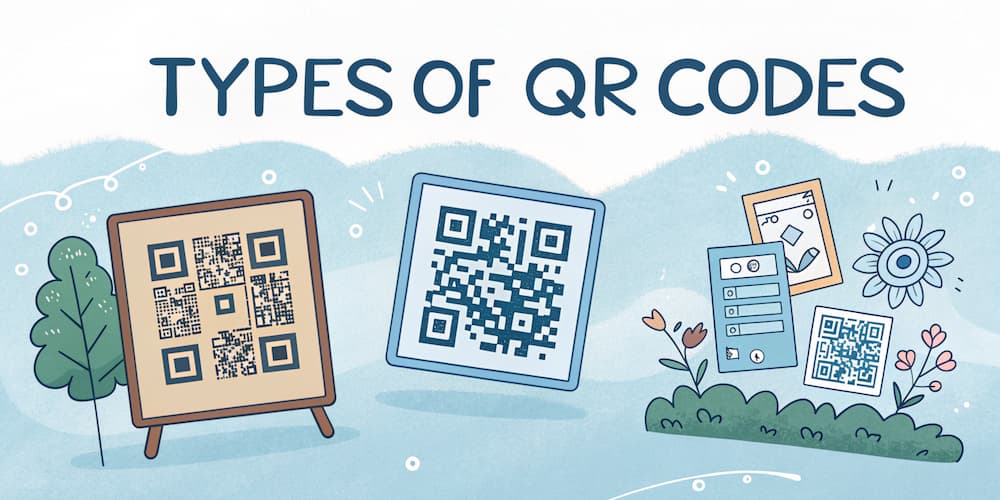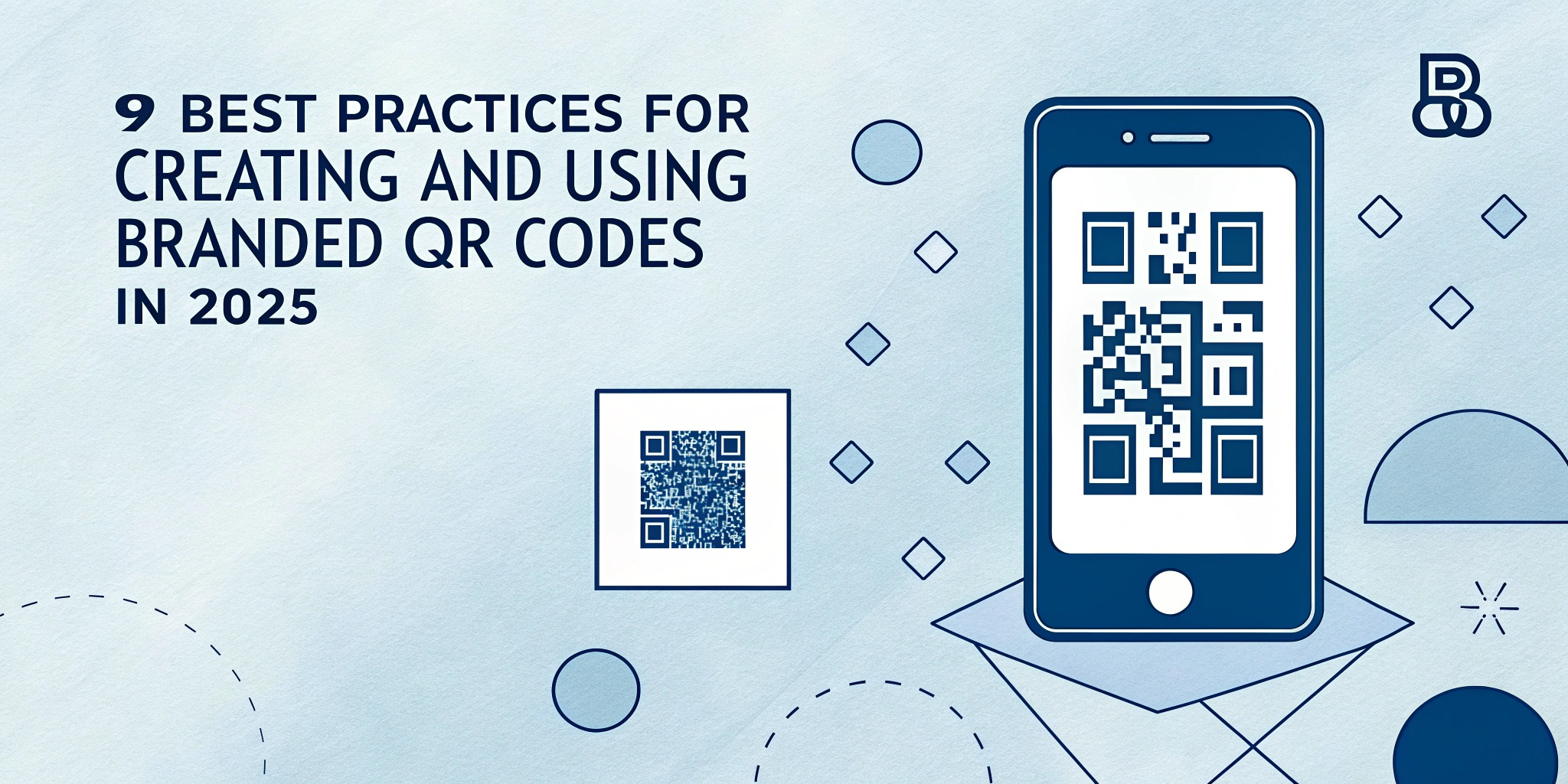A quick response code, a QR code, is a specifically tailored barcode designed for phone scanning via apps and internal cellular cameras. The beauty of QR codes lies in their versatility, from contact details to coupon savings, from website directions to ‘leave a review’ prompts, from Facebook invites to product purchasing, and so much more. In the remainder of this article, we’ll delve into the world of QR codes, their types, formats, practical applications, and best practices for using QR codes, all to make your experience with these complex symbols as seamless as possible.
Unlocking the Potential of QR Codes
A brainchild of the Japanese engineer Masahiro Hara, a QR code first emerged as an alternative to conventional barcodes, designed to facilitate manufacturers in creating product inventories. QRs deployed cutting-edge 2-D barcode technology that enabled them to scan QR codes faster and store higher volumes of information than their barcode predecessors. You can create your very own QR code that fits your brand using Viral QR’s Dynamic QR Code Generator to maximize engagement. This evolution of QR codes is a testament to their adaptability and continuous improvement. Typically, the best QR code is composed of high contrast to make it amenable for scanning by cameras and phones.
The conventional QR code, with its many smaller dots surrounded by three conspicuous dots at the edges, is a practical and versatile tool. Also known as the Quick Response Code, modern QR code technology has diverse applications that go beyond their traditional tracking functions to conducting market research to increasing website traffic. The hallmark of a QR code is its incredible versatility, derived from its distinct pattern or markings that allow it to act as a storehouse for bundles of information and data. This practicality is what makes QR codes such a valuable asset in various industries.
QR Code Types
On the surface, a QR code looks like a pattern of black and white, but in reality, each code is characterized by a unique format that determines the purpose for which it is used. Some unique purposes of QR code types include variations in data capacity, error correction levels, and inherent design features. A wide range of choices enables you to meet the specific needs of your industry, whether it be customer service, marketing, event management, etc.
Here are the major formats or QR code variations:
Static QR codes
- Static QR codes are known as permanent QR codes. They are primarily used for static pages, contact details, or any other unchanged information.
- Static codes are of different types, such as SMS QR codes to redirect customers to a message with your phone number, Text QR codes to display text, serial, or coupon, and Wi fi QR Codes for seamless internet access.
- Static QR codes can encode a wide range of data like numeric, alphanumeric, binary, etc.
- Static QR is a type of QR code that cannot be edited or overwritten once generated. A new QR code must be created to update the encoded information. While the encoded data in static QRs is unchangeable, it can direct users to dynamic content, like a website page, that can be updated when needed.
- It’s commonly used for one-off scenarios where straightforward data is involved, and the information is likely to remain constant over time, such as website URLs, text, contact information, WiFi network details, etc.
Dynamic QRs
- Dynamic QRs allow you to edit information as many times as necessary without reprinting and redeploying the code.
- They offer additional tracking and analytics capabilities compared to static codes.
- The editability of dynamic codes makes them perfect for creating custom QRs for diverse uses and effortlessly updating contact details, links, or promotions.
- These QR codes are best used in marketing campaigns, restaurant menus, event ticketing, product packaging, and real estate listings. Dynamic coupon QR codes can also be used for promotions.
QR code Model1 and Model2
This is by far the most ubiquitous QR code format that is prominently used for marketing. Although both models are similar in structure, they differ in their storage capacity and error detection and correction levels.
The QR code Model1 is the prototype on which other models have been designed, each of which suits a particular QR Code use case. We call this QR code model the OG, the first of its kind. Because this is the earliest quick response code, it does have limitations. For instance, the largest version of Model1 is marked by (73×73 modules) with a storage of 1,167 numerals. Compared to the model we are about to briefly discuss next, this version stores significantly less information.
On the other hand, the Model2 boasts 40 (177 x 177 modules) and has a storage of 7089 numerals. Automatically, the larger storage capacity makes this improved version easier to use in various situations. Plus, the alignment pattern does help your phone’s scanner accurately read the code with minimal room for error.
A Model1 regular QR code is often seen on business cards or as a vCard QR code, hosting the basic information needed to contact a business. A Model2 is often seen on product packaging, review prompts, ingredient lists, etc.
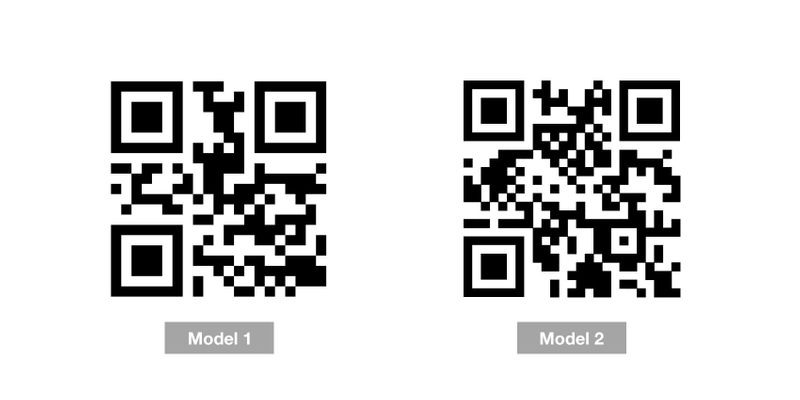
Micro QR code
As indicated by the name, this code is a smaller version of the original QR code, implying that it can store fewer characters or data than a regular code. That’s why the micro QR code carries limited information and often goes on tiny labels.
These specific types of QR codes can hold data modules in condensed form, whereby its largest version is said to be an M4 (17×17 modules) that can store up to 35 modules. This code can easily be printed on smaller surfaces, hence its use in producing and inventorying small-sized items. This code is well-versed in encoding a wide range of information, including 8-bit graphic character sets, alphanumeric, and other special characters.
You’ll scan QR codes like this on a pill bottle to read medication information, on a jewelry tag to see product details, and on a circuit board to look at manufacturing notes.
It’s important to remember that micro QR codes can store much less information than standard ones and are much more prone to lesser error correction. Additionally, they need higher-quality scanners that are able to read such compact designs.
iQR Code
Also standing for “Intelligent QR code,” this brilliant discovery is a type of 2D barcode with more storage capacity than a typical QR code. Think of this code format as the rectangular or square version of the micro QR code that stands out for its narrow and strip-like appearance. It can not only be printed in smaller spaces but can also fit on cylindrical objects that can be tough to navigate.
Specifically speaking, its smaller size is compensated by its considerable storage capacity that includes 219 alphanumeric, 361 numeric, and 92 kanji characters, while its maximum version, 61 (422×422 modules), can store up to 40,000 numerals. Its storage capacity makes it preferable to the linear barcode for product inventory, which allows sufficient leverage for businesses to provide product details and keep track of them.
Most companies will use these types of QR codes on bottles to steer users towards more product information and options to purchase. It’s worth remembering that iQR codes are not as widely adopted as standard ones. Still, they have the potential for specific industrial applications.
SQRC Code
Standing for a Secret-function-equipped QR code, SQRC is a seemingly regular code specially designed for utmost confidentiality to ensure the embedded information is impervious to a simple scan.
The code’s patterns and pixels are integrated with a reading restriction function to prevent unauthorized access or infringement of the underlying information, including public and private data. A smartphone device cannot crack this QR code; it requires a specific QR code scanner.
Most businesses would use a QR code generator for SQRC QR codes to add another layer to secure payments through a private data system. That way, the person paying can be more confident they won’t get hacked, or their money won’t go where it’s not supposed to.
Frame QR
A frame QR is precisely what its name says – a pseudo picture frame where the frames take the form of a QR code image. At the code’s center is a blank canvas or space wherein you can place letters, images, or a company logo for promotional purposes. You can even create a custom frame QR code featuring your preferred shapes and colors for an elevated user experience.
These types of QR symbols only differ in aesthetic appearance; they still inhibit the same capabilities that their standard counterpart offers, around 3 KB of data.
Most restaurants will have these different QR code types, reading “scan me” or “learn more.” They find it easier than providing extensive paper menus for customers to flip through. They are great at branding and marketing due to their design; however, they require careful testing to ensure their scannability.
HCC2D Code
This QR code is still in the testing phases and is aimed at preserving QR robustness in response to external distortions. Its highlight is an additional field called Color Palette Pattern that aims to optimize colors to increase the data density and thus improve the code’s ability to retain its integrity against chromatic distortions.
We cannot specifically state the data storage capacity of these types of QRs as they are still in the research and developmental phases. Each color palette uses a set of 4-8 distinct colors for encoding purposes, with minimal error correction necessary so far.
Examples for future use may include applications with large amounts of data, such as product information sheets, medical records, or complex authentication codes.
Logo QR Code
When using a logo QR code, QR code generators prioritize a company’s logo in the overall design schematics. This path is aesthetically pleasing to the eye and much more recognizable to customers regarding brand identity.
Typically, the logo is centered on the code pattern for users to see. This kind of “highlighting” procedure amplifies visual engagement for loyal fans and prospective buyers. The most creative part is that you can adjust colors, shapes, and placement to ensure full brand authenticity.
Any company can logistically be an example, but we’ll use Burger King Kuwait as an example. To follow their Facebook page, you might see their colorful brand colors in the middle of the code. How fun!
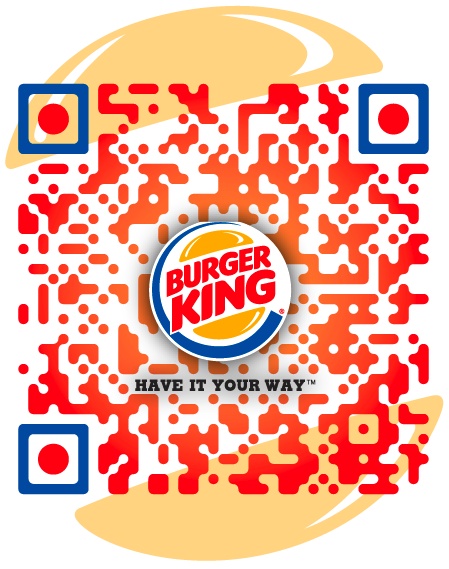
How many types of QR Codes are there?
Website QR Codes
These codes deliver online traffic to your website by embedding your URL into a QR code. Instead of manually typing in your web address, a QR code will directly transport users to your web page quickly and hassle-free, thus capturing leads. With a simple QR scan, you can keep track of your website traffic, which is crucial for detailed data analytics.
Image Gallery QR Code
QR codes can also be placed next to physical prints in a gallery to direct users to your image gallery and sell products or prints. With a code QR generator, you can create an image gallery QR code to give users access to exclusive content or a sneak peek into your latest work.
Social Media QR
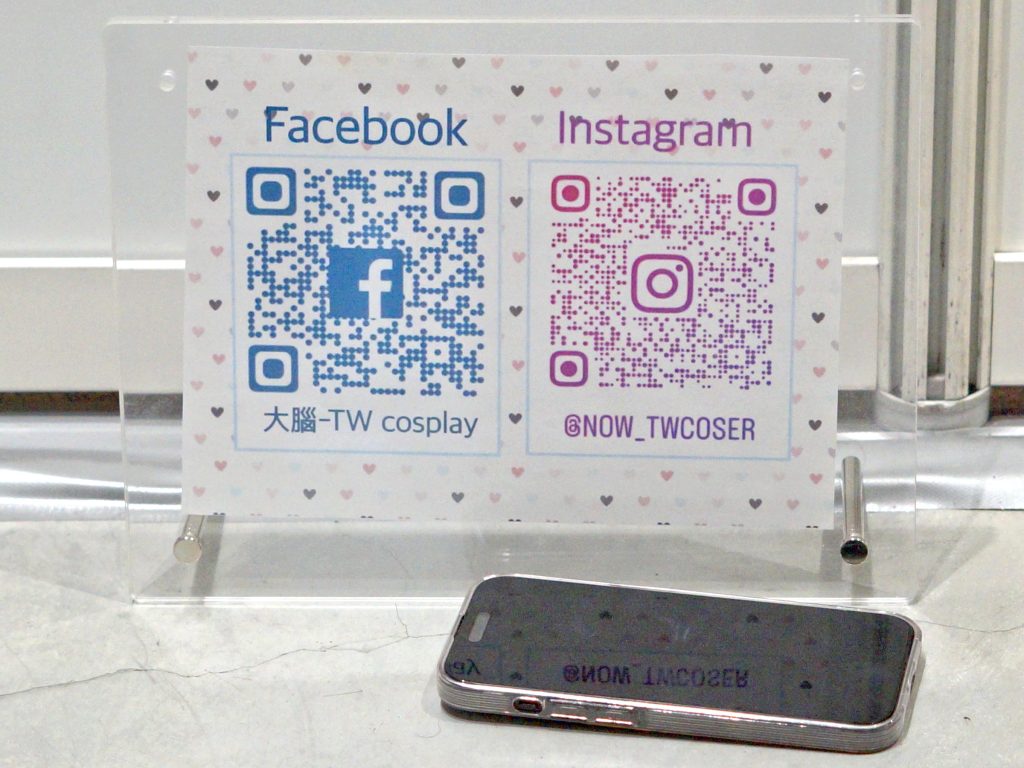
Nearly all businesses have a social media presence, and with a social media QR code, you can link all your social media profiles, such as Facebook, Pinterest, Twitter, LinkedIn and Instagram. This helps to engage with your customers through multiple social media platforms and thus provides a convenient way to promote business cards, takeaway bags, product packaging, or flyers and banners.
Image QR Code
You can share various types of content using a QR code, such as detailed product brochures, instructional manuals, case studies, and e-books in PDF format. These PDFs are an excellent resource to guide and inform users about your company and your products and services at low overhead costs.
Location QR Code
A Vcard QR code allows businesses to share their business location via a Google map to help customers locate their addresses quickly. Combining this with the direction features of GPS apps is a great way to encourage foot traffic to your site or office.
QR Code vs. Barcode: What’s the Difference?
To the naive eye, a QR code and barcode may be one and the same thing. Indeed, a QR code and a barcode are technically related. Other than the two are examples of two-dimensional codes, they are divided into various types that make them quite distinct from each other. Here are the key differences between them.
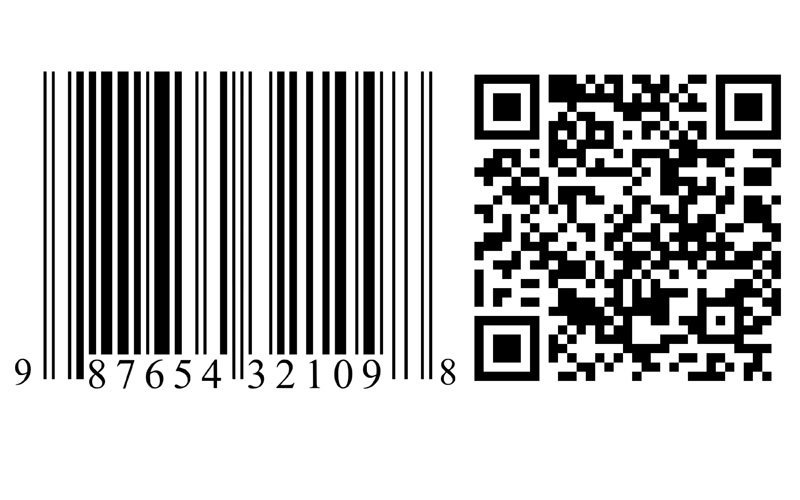
Design
A single QR code comes in the form of big black squares laid out over a white background, wherein three small squares lie in the corners.
In contrast, barcodes feature parallel lines of varying thickness and spacing.
Information Capacity
When it comes to storing potential, QR codes enjoy a distinct advantage over barcodes. QR codes are also well-equipped to encode a variety of data types encompassing special characters, alphanumeric characters, and binary data.
In contrast, barcodes can encode merely numeric or alphanumeric characters, which is why QR codes are preferred for encoding contact information, URLs, and multimedia content.
Data encoding
A single QR code is based on a matrix pattern, which maximizes space for information storage in both vertical and horizontal dimensions.
Data is encoded in a linear format in barcodes represented by a set of parallel lines with variations in their width and spacing.
Readability
QR codes can be read from different angles, while a clear line of sight is essential to ensure accurate scanning of barcodes.
The scanning output of QR is of a higher quality even when the code is partially damaged or obscured, which is owed to its error correction capabilities. 2D barcodes can check for and rectify errors to a degree, but this doesn’t make them immune to damage or distortion. Still, barcodes are quite useful in some industries due to their simplicity and lower scanning requirements.
QR Code Applications
QR codes have found a plethora of applications in the business arena, and they have opened up whole new ways of interacting with audiences.
1. Share business information
With a single QR scan, businesses can readily share online video content and websites with their target audience. A custom QR code can be printed on product labels as well as business cards so that your business information can be shared right away on the user’s phone when they scan the code. You can create your very own QR code that fits your brand using ViralQR’s Dynamic QR Code Generator to maximize engagement.
2. Marketing initiatives
A QR code offers a simple yet effective way to embed links to your website to attract traffic directly to e-commerce sites. Similarly, QR Codes can be integrated with app sites to encourage users to discover and download your mobile application when scanning the code using a device camera or QR code reader.
Companies can also generate a unique code, which embeds coupons or links to special offers, and then add these codes to product packages or digital platforms. By simply scanning the code with their mobile device, users can avail themselves of discounts that enhance their brand appeal.
3. Promoting your business
QR codes can be used to advertise upcoming business events and drive greater participation in your marketing activities. A great way to properly promote your business through events is to use a geolocation QR code, which stores the location’s GPS coordinates and redirects users to that specific location. That way, you see internally who has accessed the physical location on the back end. Through measuring logistics, you’ll be able to predict how many attendees will arrive at your event.
Excellent examples to utilize with geolocation QR codes include brochures, flyers, and posters.
Another great way to promote your business is through social media QR codes. They’re a great way to build two-way communication with your brand via social media platforms like Twitter, Facebook, and Instagram. This can not help in reaching out to customers with stories and images but works as a promotional strategy to advertise your products and services to a broader audience.
4. Contactless payments
Payment QR codes are specialized codes used by customer-facing businesses like restaurants as an alternative to traditional cash to help customers send or receive payments conveniently. A 2021 Statista survey revealed that 8 out of 10 respondents had made payments using QR codes.
Though the HCC2D QR code is still in error correction and experimental phases, it is said to be released sooner rather than later. Once fully adapted to take on contactless payments, this QR code would be a reliable source to implement.
Best Practices for Using QR Codes
➔ For Website URL QR codes, the URLs should be short and simple so that they can be scanned easily. Conduct a test run on multiple devices and QR scanners to ensure they are compatible with a QR code reader.
➔ Ensure your QR code contains the most relevant contact details for your business, such as phone number, email, name, and company name to facilitate easy access. Since users are likely to scan with a smartphone, the contact information should be optimized for mobile view.
➔ The payment method should be specified within the payment QR codes for accurate and credible transactions.
➔ The QR code should be of optimal size so that it can be scanned easily while maintaining print quality.
➔ Monitor dynamic Q codes regularly to ensure linked content provides accurate and up-to-date information.
➔ The QR code should be accompanied by easy-to-follow instructions that tell users how to scan QR codes and what they should expect. A clear call to action should be present near the QR code that links to a mobile-friendly webpage.
How to Choose the Best QR Code Type
Just like the broad range of QR types, the possibilities are virtually endless when it comes to creating QR codes. The choice of the QR code generator ultimately depends on whether you want a static or dynamic QR code that depends on your business needs or campaign type.
- Static QR codes are suitable for one-time campaigns or personal use that entails providing detailed information and where the stored information does not have to be updated.
- If you are running a full-fledged marketing campaign, dynamic QR codes are the way to go, as they help you edit and redirect your codes depending on your business objectives. Unlike the fixed content of static QR’s, Dynamic QR’s give you greater control over content to deliver more personalized experiences to your customers.
- With dynamic QRs, you can even track how your marketing campaigns are faring based on key analytics like location, date, device, and time of the scan, as well as tweak the content during ongoing content. Simply integrate your Google Analytics account with ViralQR’s dashboard and track your dynamic QR code to get real-time insights into your customer’s demographics.
- Go beyond standard black-and-white QR Codes and instead go for dynamic QR codes if you wish to customize your code. With custom QR codes, you can infuse the code with your desired elements like design, logo, and colors that give your brand a distinct personality.
FAQ’s
Do I need a static or dynamic QR code?
Whether you need static QR codes or dynamic ones invariably depends on your user case. If you are looking to generate a WiFi QR code or website, static QR codes would work great. Dynamic codes enable you to track and download codes in different formats, which makes them well-suited for marketing.
How many versions of QR codes are there?
You can choose from more than 30 types of QR codes for your business, including basic Models 1 and 2 and advanced formats like micro QR code, iQR, and FrameQR. Create a variety of QR code types in merely minutes with ViralQR’s code generator, which is easy to implement and cost-effective.
What type of QR code should I use?
The type of QR you should use depends on your purpose. If you have limited space, use a micro QR code, while coupon QR codes would be best for promotions.
How do I know what type of QR code I have?
In order to discern the specifics related to your QR code types, use a QR code reader or your IOS and Android smartphone with a higher operating system than iOS 11 or Android 8 to conduct a quick scan. Accessing the link that pops up will help to determine the QR code type in terms of patterns and encoding features.

